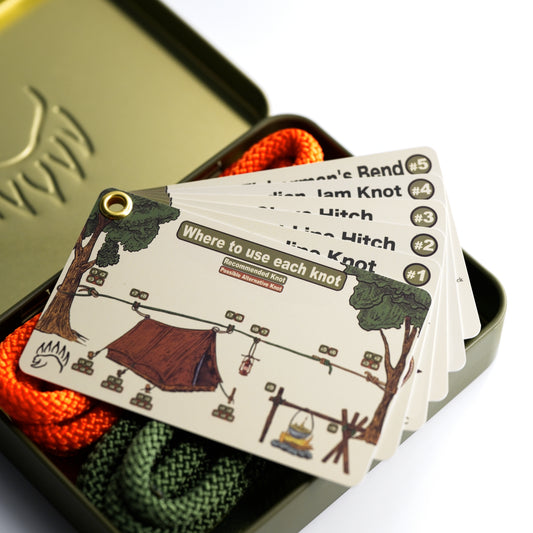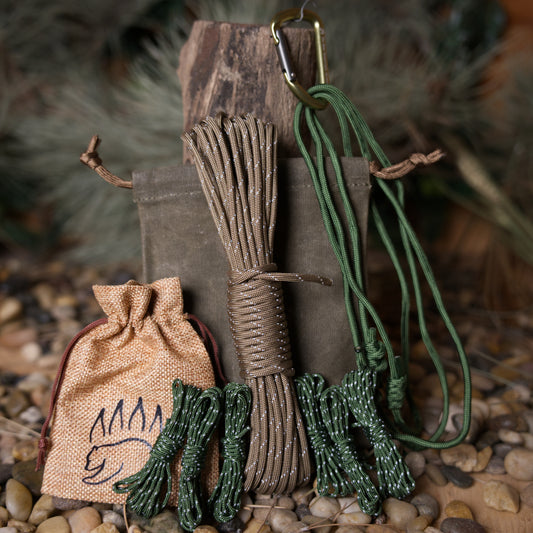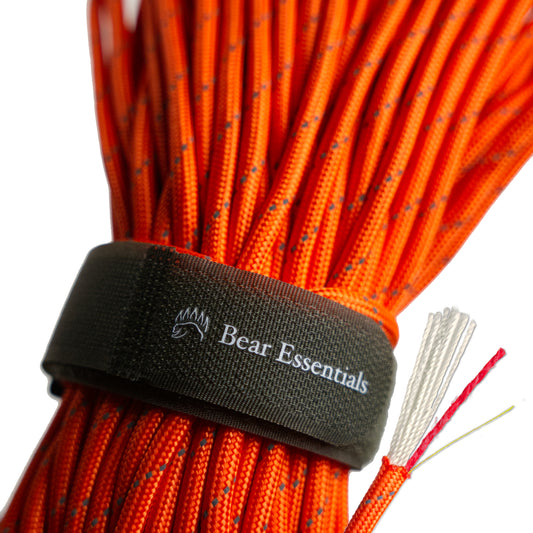How to Tie the San Diego Jam Knot
Usage
The San Diego Jam Knot is commonly used in fishing to tie a line to a hook, swivel, or lure with exceptional strength. It works well with monofilament, fluorocarbon, and braided lines and is a favorite for anglers targeting big fish.
Why Learn the San Diego Jam Knot?
Its robust design ensures reliable connections for demanding fishing conditions. This knot is a favorite for anglers needing strength and ease across line types.
Common Uses
-
Fishing:
- Ties lines to hooks, swivels, or lures for strong connections.
- Secures heavy jigs for offshore fishing, like tuna.
-
Flyfishing:
- Attaches fly lines to leaders for precise casts.
- Connects artificial flies to tippets securely.
ABOK Number
(Ashley Book of Knots)
Other Names
Category
|
Notable Features
- High Strength: Retains up to 95% of line strength, ideal for big fish.
- Versatile Use: Works with monofilament, fluorocarbon, and braided lines.
- Quick Tying: Simple to tie, even in rough conditions like at sea.
- Secure Hold: Locks tightly to hooks or swivels, reducing slippage.
- Compact Form: Sleek profile minimizes drag during casting.
Variations
Doubled San Diego Jam Knot vs. San Diego Jam Knot
- Pros: Doubles the line through the eye, increasing strength for heavy loads.
- Cons: Bulkier and slightly harder to tie, especially with thick lines.
Similar Knots
Improved Clinch Knot vs. San Diego Jam Knot
- Pros: Simpler and faster to tie for light tackle.
- Cons: Less reliable with braided lines, prone to slippage.
Uni Knot vs. San Diego Jam Knot
- Pros: Wraps inside a loop, offering versatility for various connections.
- Cons: Slightly more complex and less sleek than the San Diego Jam.
History
The San Diego Jam Knot, also known as the Reverse Clinch Knot or Heiliger Knot, was popularized by tuna fishermen in San Diego, California, for tying heavy jigs on long-range fishing trips. Its design, similar to the Clinch Knot but tied in reverse, emerged to meet the demands of securing lines under extreme tension, as noted in fishing communities. While not listed in The Ashley Book of Knots, its widespread use in modern angling highlights its reliability and simplicity for diverse fishing lines.
Security Level
The San Diego Jam Knot is highly reliable, retaining up to 95% of line strength when tied correctly, making it suitable for heavy fish like tuna. For critical applications, use 6-7 wraps and wet the knot to prevent damage during cinching. A stopper knot on the tag end such as the stevedore stopper knot or double overhand stopper knot, can enhance security, though careful tightening is key to avoid weakening the line.
Downsides
- Cinching care: Requires slow, moistened tightening to avoid line damage.
- Learning curve: Needs practice for neat wraps and smooth cinching.
Structure
- Pass the tag end of the line through the eye of the hook or lure, pulling about 6-8 inches through.
- Double the tag end back, running it parallel to the main line toward the eye.
- Wrap the tag end around both the main line and itself 5-7 times, working toward the eye (use more wraps for light line, fewer for heavy).
- Pass the tag end through the loop formed near the eye, then through the larger loop created by the wraps.
- Wet the knot with water or saliva, then pull the main line and tag end slowly to cinch it tightly, trimming excess tag end.
Pro Tip: Wet the line before cinching to prevent friction damage. Ensure wraps are neat and stacked to maximize strength. Pull steadily when tightening to avoid line burn or weak spots.
FAQ
Is the San Diego Jam Knot strong enough for big fish?
Yes, it’s robust for large fish like tuna if tied with 6-7 wraps and cinched properly.
What line works best for the San Diego Jam Knot?
It excels with monofilament, fluorocarbon, or braided lines, with braid offering top strength.
How does the San Diego Jam Knot compare to the Palomar Knot?
It’s easier to tie with treble hooks but slightly less strong than the Palomar.
Can the San Diego Jam Knot be used for flyfishing?
Yes, it’s great for attaching flies or leaders, ensuring secure connections.
Why choose the San Diego Jam Knot over the Improved Clinch Knot?
It’s more reliable with braided lines and retains higher line strength.
Important Notes on Safety
Common failure points include line burn from dry cinching or uneven wraps. Always verify wraps are stacked neatly and the knot is snug before fishing. Inspect the line for wear or nicks before tying. Wet the knot during cinching to prevent friction damage.
Practice tying in low-stakes settings to ensure consistency.







